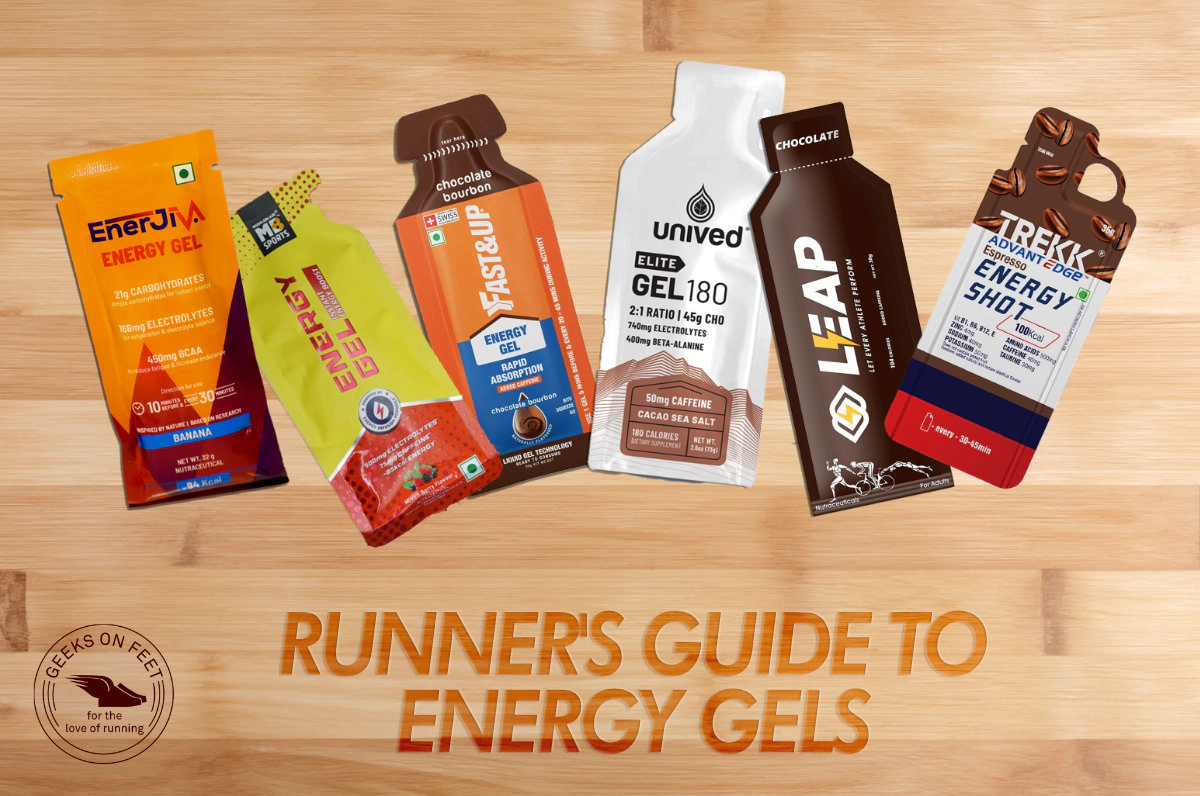
In the realm of long-distance running, whether it is half-marathons, marathons, or ultras, our reliance on carbohydrates for energy is paramount. We store energy as glucose within our muscles and liver, which fuels us forward during these races. However, as the duration and intensity of exercise increase, our muscle energy depletes.
As amateur runners, we often hear from fellow runners - we just run on feel and drink plain water through the race. While it is possible to train to run on feel, the performance will be sub-optimal. For shorter distances of 5K and 10K, there is typically enough glycogen stored in our muscles and liver, especially for seasoned runners, not to require gels. However, for longer distances beyond that, this may not work. Our body’s primary fuel source for running is glycogen, and our glycogen stores are limited. You can usually sustain a run of about 90 minutes using primarily glycogen.
Have you Heard of the phrase, “Hitting the Wall”?
Distances beyond 10K often exceed that 90-minute mark, requiring you to replenish your glycogen stores while running. The “Wall” is when our glycogen stores are depleted, your body starts to rely more heavily on fat for fuel. This process is less efficient and can lead to a sudden drop in energy levels. Energy gels provide an extra boost of carbohydrates to help maintain your glycogen levels, delaying the onset of the “wall” and allowing you to run stronger for longer.
What makes up Energy Gels?
Carbohydrates are the primary ingredients in the energy gels. However, each gel formulation uses different types of carbohydrates which defines their absorption rates and how quickly they can provide energy to the body. The ideal formulation often includes a mix of different types of carbohydrates to optimize energy delivery and minimize gastrointestinal discomfort.
Here are some of the common carbohydrate sources used in energy gels.
Ratio of Carbohydrate Sources:
The ratio of glucose to fructose in energy gels is usually 2:1, or two grams of glucose to one gram of fructose. This ratio is ideal for endurance athletes because it allows the body to absorb a large amount of carbohydrates without causing stomach discomfort and provides consistent support during prolonged exertion.
However, some research suggests that a ratio of 1:0.8 (or 1.25:1) may also be effective, and the difference in performance outcomes is likely negligible for many athletes. The optimal ratio may also depend on how many carbohydrates you plan to ingest per hour, with a 2:1 ratio being better for ingesting 90 grams per hour and a 1:0.8 ratio being better for ingesting closer to 110 grams per hour.
How to choose an Energy Gel?
The thing to remember when choosing an Energy gel is not everyone has a similar capacity for energy storage and depletion. Thus respecting our body and understanding its needs is important.
As a marathon runner, I have learned this the hard way. I had to test a few brands before deciding on the one I liked. I found a few too sweet for my palate, while some others I could not digest well. It is very important to simulate race day situations during training runs with gels too.
There are plenty of options to choose from in the Indian market. Choosing the right running gel can significantly impact your performance and comfort during runs. Here are key factors to consider when selecting a running gel:
| Factor | Description |
| Energy Content | Check the type and amount of carbohydrates (20-30 grams per serving typically), and overall calorie content. While the more the calorie content the better it is, one might have to choose based on how much they can consume at once. There are gel options that can deliver more than 40g (SIS beta fuel, Unived Elite Gel, PF 90 to name a few) |
| Ingredients | Consider the type of carbs (simple vs. complex) used. It is also important to see the ratio of carbohydrate sources used which might improve the effectiveness of energy delivery.
Check for the presence of other ingredients. Most gels come with additional ingredients, such as electrolytes, amino acids, and caffeine. You may or may not need them, and some of the ingredients may affect your gut and can cause stomach discomfort. Please do read the labels and make sure you understand what you are taking. Note on Caffeine: Caffeine in energy gels can offer a temporary boost in alertness and endurance, but it's crucial to use it wisely and responsibly. Be mindful of your individual tolerance, dosage, and the timing of your intake. Don't rely solely on caffeine - It's a supplement, not a solution. Focus on proper training for sustained performance improvement. |
| Consistency and Absorption | Evaluate the thickness and digestibility. Energy gels are generally hypertonic (not isotonic), meaning they need water for absorption. This is because they contain a high concentration of carbohydrates. Some gels are thicker and may require more water to consume comfortably. |
| Taste and Flavor | Choose flavors that you find palatable. More brands have a range including fruit-based, chocolate, and savory options. |
| Packaging and Portability | Look for gels that are easy to open and carry during runs. Packaging should fit easily in your running belt or pocket. |
| Dietary Considerations | Ensure the gel meets any dietary preferences you might have (e.g., vegan, vegetarian, gluten-free, non-GMO, organic). |
| Cost and Availability | Consider the price per gel and availability, both locally and online. |
Each runner absorbs gels differently, so it’s not about how many you eat at a time but how you digest them. It’s advisable to consume one gel at a time and not more. Gels should be tried and tested well before race day.
I generally take one gel 20 minutes before the start of the race. And then at every 7th km for the marathon and Half marathon. I alternate between caffeinated and non-caffeinated gels and sip electrolytes every 3rd km.
Gels should be accompanied by water to ease the absorption process. If you are sensitive to caffeine, such as a raised heart rate or overstimulation of the nervous system (which can lead to cramping) avoid it. However, if you are comfortable with caffeine, use it during the later part of the race for an extra boost in alertness and performance.
Using energy gels strategically can significantly enhance performance and endurance during long-distance running events. By understanding the role of carbohydrates and how to effectively use gels, runners can avoid energy depletion and maintain optimal performance.
Energy Gels in Indian Market
In India, a variety of brands offer energy gel products for runners, cyclists, and other endurance sports enthusiasts. This table presents a selection of energy gels from notable brands, detailing their key ingredients, carbohydrate content per serving, and purchasing options.
| Brand | Product | Key Ingredients | Carbohydrates per serving | Where to Buy? |
| Enerjiva | Enerjiva Energy Gel | Maltodextrin, BCAA | 21g | Enerjiva.in |
| Fast&Up | Fast&Up Energy Gel | Maltodextrin | 18g | Amazon.in
Fastandup.in (referral code FUPGEEKSONFEET for additional discount) |
| Leap | Leap Gel | Maltodextrin, Dextrose, Taurin | 25g | Amazon.in |
| Muscle Blaze | Sports Energy Gel | Maltodextrin, Dextrose | 21g | Amazon.in |
| Trekk | Trekk Energy Shot | Dextrose | 28g | Amazon.in |
| Unived | Gel 100 | Maltodextrin, Dextrose, Beta-Alanine | 25g | Amazon.in |
| Unived | Elite Gel 180 | Maltodextrin & Fructose (2:1), Beta-Alanine | 45g | Amazon.in |

Aditi Pandya is a life long athlete. She was born to run and play sports. Aditi is the co-founder of geeksonfeet.com.